Right Whales
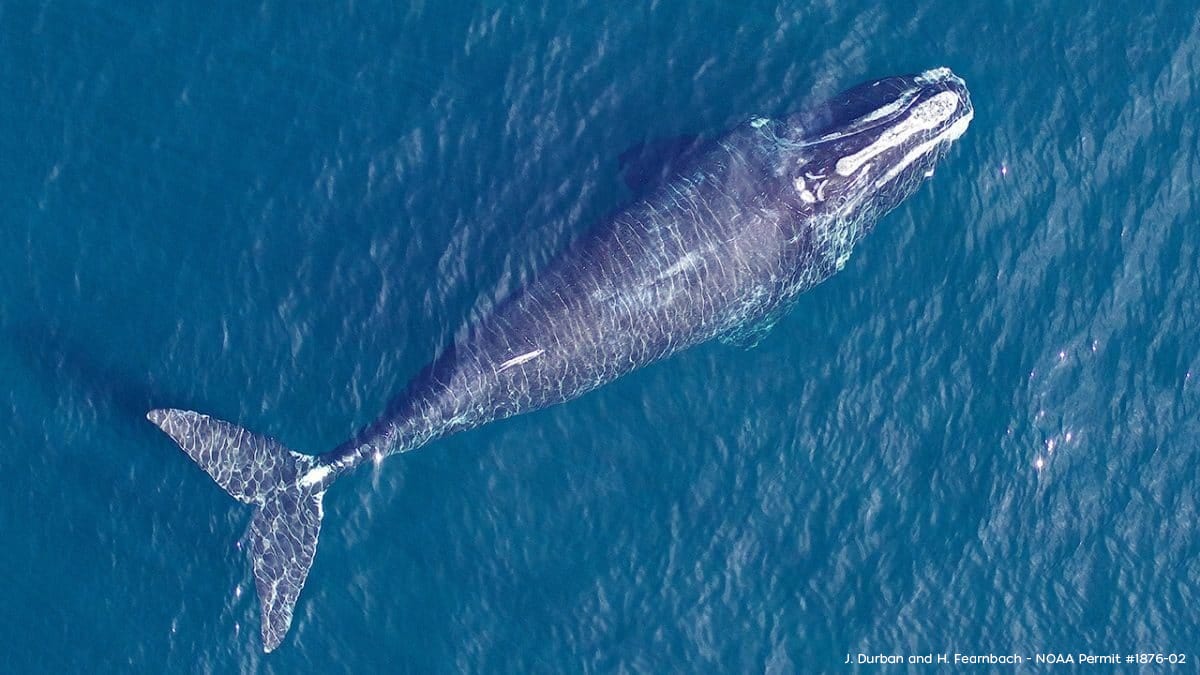
The North Atlantic right whale is one of the most endangered whales in the world—approximately 340 remain.
What are North Atlantic right whales?
The North Atlantic right whale (NARW) (Eubalaena glacialis) is one of the most critically endangered whales in the world—approximately 340 of these majestic marine mammals remain, including less than 80 breeding females. NARWs are predominantly found on the Continental Shelf of the East Coast of the United States and Canada, making them especially vulnerable to human activities. The species is protected under the U.S. Endangered Species Act, the Marine Mammal Protection Act, and Canada's Species at Risk Act.
Why are they important?
Right whales play important roles in ocean ecology. They help keep the marine ecosystem healthy and productive by redistributing nutrients from the ocean from the bottom to the surface through their fecal matter. After they die, their carcasses serve as food for other organisms.
While critically important to the ocean's health, the number of North Atlantic right whales is dwindling to dire levels. With less than 80 breeding females, the number of calves being born each year cannot keep pace with the number of human-caused deaths. The threats to NARW, as well as their precipitously low numbers, are directly related to human causes: fishing gear entanglement, ship strikes, and climate change.
What are scientists doing to protect right whales?
Actions are being taken by the scientific community and concerned organizations to ensure the long-term survival of this critically endangered species.
1. Preventing entanglements:
- According to the most recent U.S. stock assessment, entanglement in fishing gear is the leading cause of death; it also contributes to poor reproductive health for North Atlantic right whales in Canadian and U.S. waters. Most right whale mortalities are unobserved and the fishing gear is usually not found with whales determined to have died by entanglement. As a result, more than 90% of entanglements cannot be linked to a specific gear type, and only 12% of entanglements can be linked to a specific location.
- Ocean scientists and engineers have developed and are refining On-Demand (also known as ropeless or buoyless) fishing technology providing a possible solution that could be both safe for the North Atlantic right whale and may offer opportunities for the Atlantic fishing industry. One device currently in use replaces the vertical line in the water column with a bottom-stowed coiled rope and buoy in a weighted cage. Fishers can send an acoustic signal , which sends the buoy to the surface and fishers can immediately haul the attached traps aboard. Efforts to reduce the cost of these systems are ongoing.
- Disentanglement efforts have been successful at freeing hundreds of large whales that have become caught in fishing gear but can only reach a small proportion of the affected animals. Disentanglement operations along the East Coast of the U.S. are spearheaded by the Atlantic Large Whale Disentanglement Network, which comprises highly-trained emergency responders from 20 public and private organizations.
- For the North Atlantic right whale to recover, NOAA determined that less than one whale per year can be seriously injured or killed. Data shows that North Atlantic right whale mortalities from fishing entanglement continue to occur at levels five times higher than the species can withstand. Furthermore, unless sub-lethal trauma from entanglements can be substantially reduced, and thereby calving success improved, recovery will not occur.
2, Preventing ship collisions:
- Marine biologists and engineers have developed a device that listens for and identifies the sounds whales make underwater. Known as the digital acoustic monitoring (DMON) instrument, the device is equipped with underwater microphones called hydrophones and can be deployed on fixed buoys or autonomous underwater vehicles called gliders. Information collected by the DMON is transmitted every two hours via satellite back to a lab at WHOI. The data are then reviewed by an analyst and posted on the publicly accessible website, robots4whales.whoi.edu. More recently, these data have been used by Whale Safe, which monitors for ships and a variety of whale species-including the endangered blue whale-near Santa Barbara and San Francisco, California. On the east coast, acoustic buoys are located in highly trafficked migration routes, including in the Northeast, and off the coast of Savannah, Ga. and Norfolk, Va.
- Scientists are working to develop next-generation whale detection systems that use thermal infrared (IR) cameras to monitor for the presence of whales in shipping lanes. When mounted high enough above sea level-such as on offshore wind turbines-these systems can detect whales up to 10 kilometers (6.2 miles) away. Installed on ships, the systems can automatically alert shipping captains to the presence of whales up to a three-kilometer (1.8 miles) distance to allow most vessels to slow down or change course.
- Vessel speed restrictions: Recently, NOAA Fisheries announced proposed changes to vessel speed regulations to further protect North Atlantic right whales from death and serious injuries resulting from collisions - part of a multifaceted approach to stabilize and recover this endangered population. The changes would expand the current mandatory seasonal speed restrictions of 10 knots or less in designated areas of the ocean and extend to most vessels measuring 35 feet or greater in length.
3. Reducing underwater noise pollution:
- Right whales communicate with one another through vocal calls, which can be heard over distances of more than 20 miles when the ocean is quiet. The calls let whales stay in touch, share information about food, help mates find each other, and keep groups together while traveling. However, rising levels of ocean noise are interfering with their ability to communicate.
- Innovative alternative techniques for probing geological structures beneath the ocean floor are being tested by scientists and industry. Traditionally, loud pulses are created by releasing air that is under extremely high pressure. A potential alternative is marine vibroseis, which uses the same energy but is spread over a longer duration. This eliminates the sharp "rise time" (rapid increase in loudness) and high peak pressure (maximum volume) of traditional techniques-the two characteristics of sound thought to be the most injurious to whales and other marine life. Additionally, efforts are also being focused on how to reduce the sound level from ship traffic, which is steadily increasing, and offshore infrastructure, such as wind turbine construction.
Recent News
What Will It Cost to Create a Safer Ocean for Endangered Right Whales?
Learn more from the blog above and new report
Conservation Law Foundaton
March 8, 2023
US budget riders compromise conservation
Michael Moore’s letter in Science
February 23, 2023
One Planet: We are all whalers—The plight of whales and our responsibility
Michael Moore interviewed on NPR/KALW radio program
January 30, 2023
Robotic buoys developed to keep Atlantic right whales safe
Mark Baumgartner and acoustic buoys featured in this Associated Press story
May 28, 2022
We Must Save the North Atlantic Right Whale to Save Ourselves
Michael Moore in this opinion piece in TIME magazine
January 11, 2023
Dead Whales and tough economics bedevil Biden's massive wind energy push
Michael Moore in this Washington Post feature
January 25, 2023
The North Atlantic Right Whale Consortium shares annual report on critically endangered species. Read the release here.
News & Insights
Recognizing Massachusetts Right Whale Day
April 24 marks the first-ever Right Whale Day in Massachusetts. WHOI biologist and veterinarian Michael Moore recently met with the resident who brought this special recognition about– and explains why it’s important to raise awareness about the critically endangered North Atlantic right whale.
Critically Endangered North Atlantic Right Whales Getting Smaller, New Research Finds
A report out this week in Current Biology reveal that critically endangered North Atlantic right whales are up to three feet shorter than 40 years ago. This startling conclusion reinforces what scientists have suspected: even when entanglements do not lead directly to the death of North Atlantic right whales, they can have lasting effects on the imperiled population that may now number less than 400 animals. Further, females that are entangled while nursing produce smaller calves.
Rare Drone video shows critically endangered North Atlantic right whales
May 10, 2021
During a joint research trip on February 28 in Cape Cod Bay, Mass., WHOI whale trauma specialist Michael Moore, National Geographic photographer Brian Skerry, and scientists from New […]
WHOI working to help save critically endangered North Atlantic right whales
North Atlantic right whales are in crisis. There are approximately 356 individuals remaining, and with over 80% bearing scars of entanglements in fishing line, the race to save this species is more critical than ever.
For Mark Baumgartner, Whale Safe is the natural evolution of WHOI’s work with passive acoustics
Mark Baumgartner is an expert ocean listener who’s research is providing the groundwork for a new system to reduce ship collisions with whales
News Releases
New book by WHOI marine scientist offers a grim look at an endangered whale species
WHOI and NOAA Fisheries Release New North Atlantic Right Whale Health Assessment Review
[ ALL ]
WHOI in the News
Why are offshore wind farms blamed for killing right whales?
The complicated truths about offshore wind and right whales
We know how to save these beloved endangered whales. Yet we’re mindlessly killing them
[ ALL ]
From Oceanus Magazine
Keeping an ear out for whales
Scientists look to safeguard the mammals with robotic buoys in the New York Bight
Whale Safe
For Mark Baumgartner, Whale Safe is the natural evolution of WHOI’s work with passive acoustics
Harnessing the Power
Can wind developers and ocean scientists work together to get US offshore wind cranking?
Eavesdropping on Whales
WHOI scientist Mark Baumgartner has installed a mooring in New York waters that listens for whales and sends back alerts. The prototype advance-warning system could one day help reduce shipping collisions with whales.



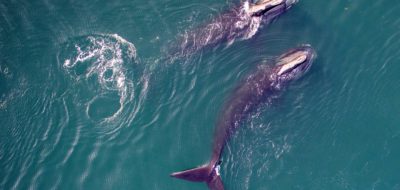
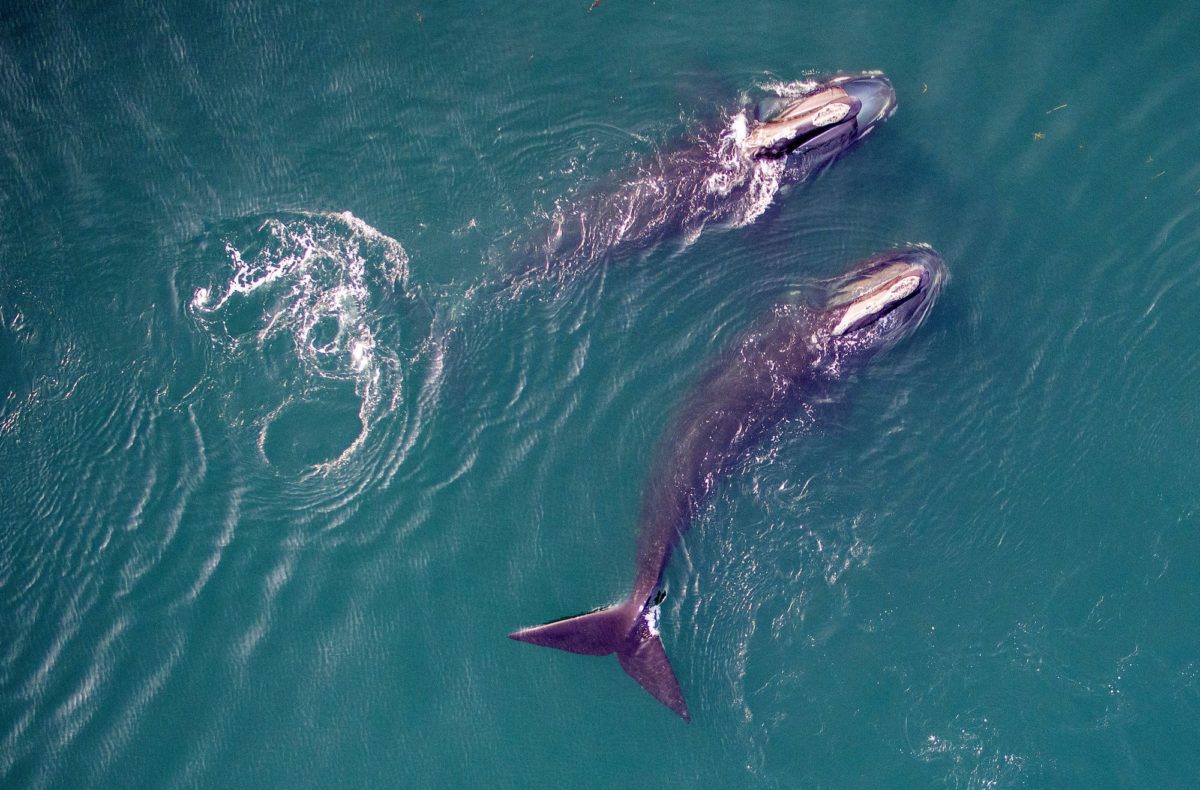
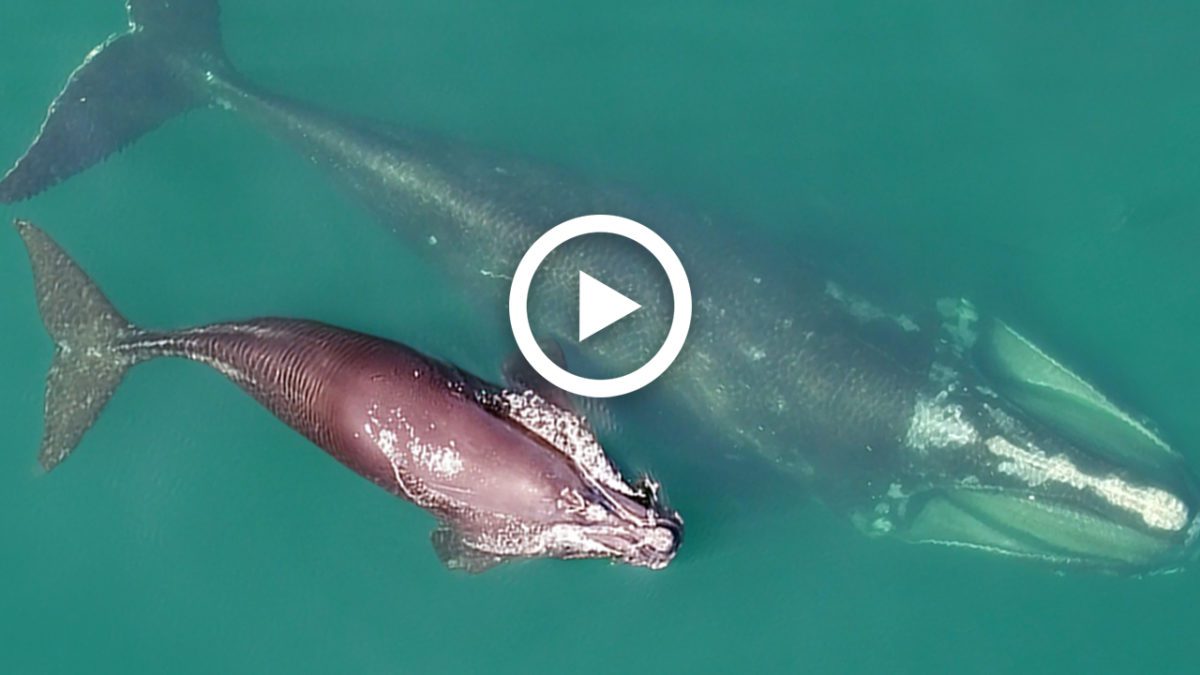
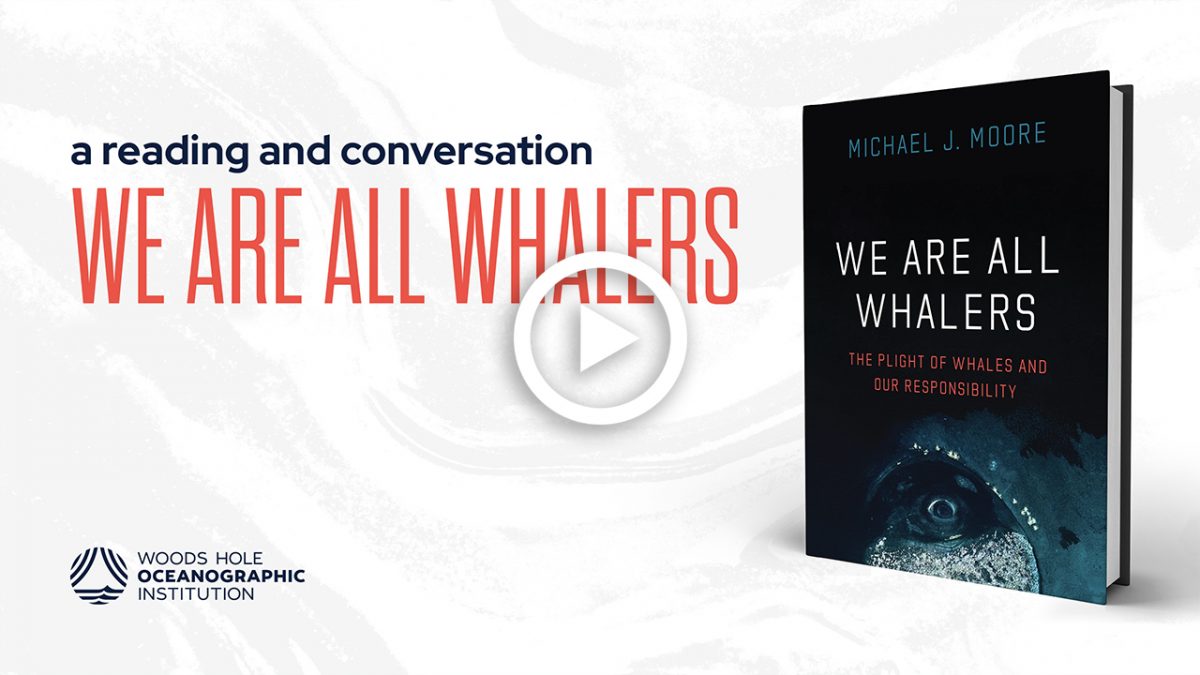
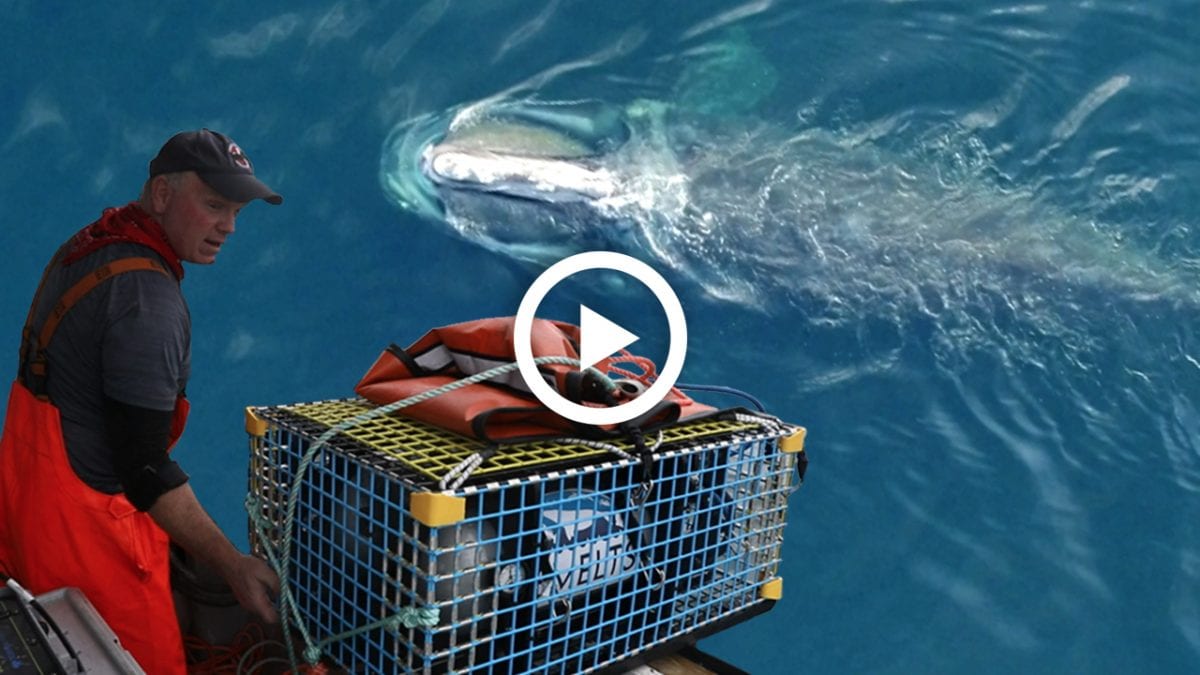
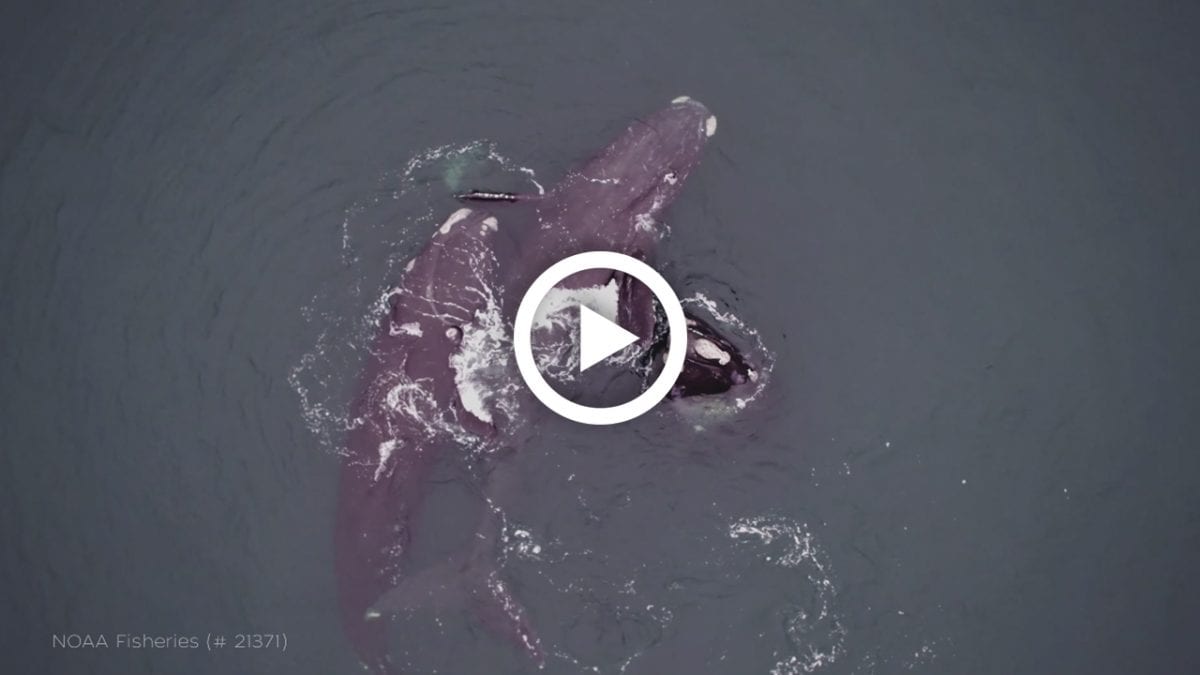
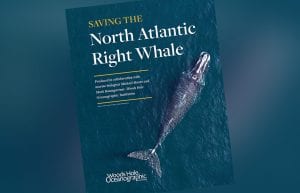
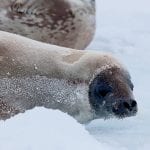 Seal Facts
Seal Facts 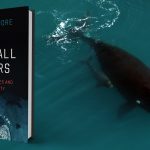 We are all Whalers
We are all Whalers